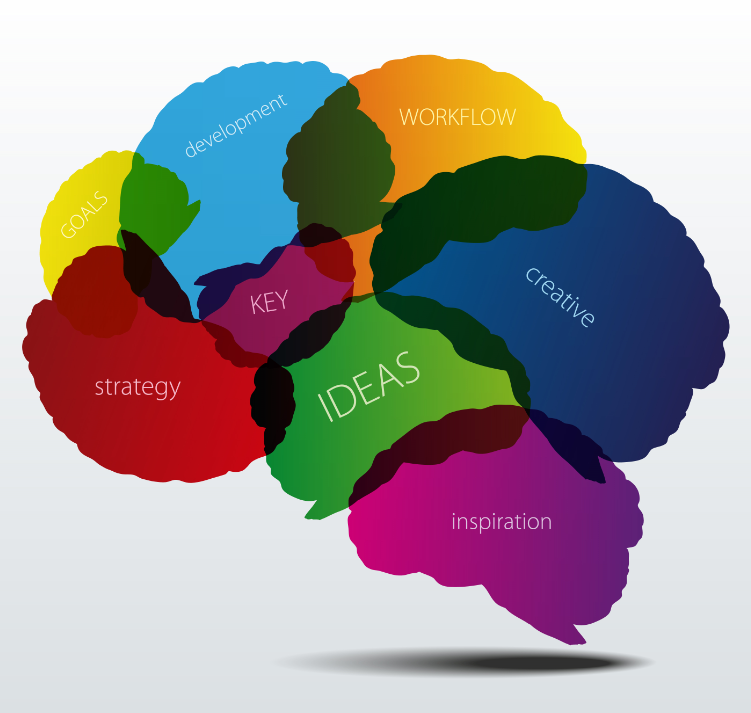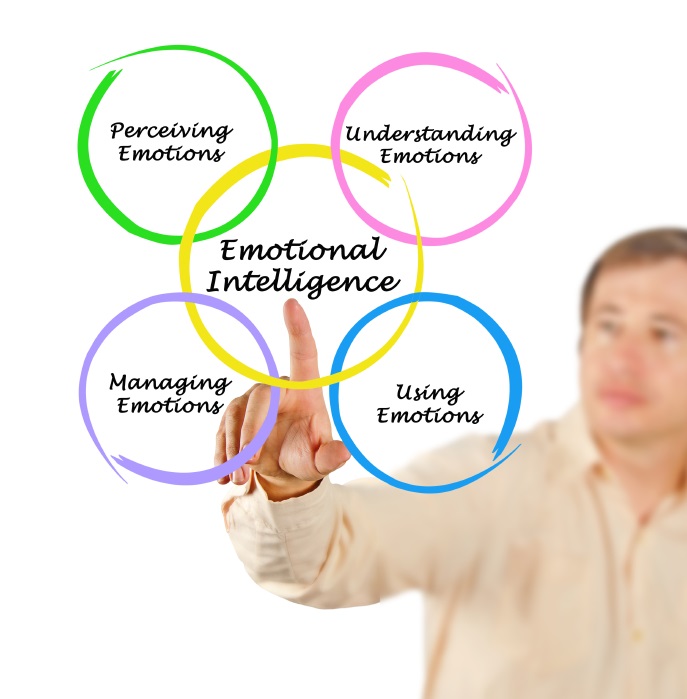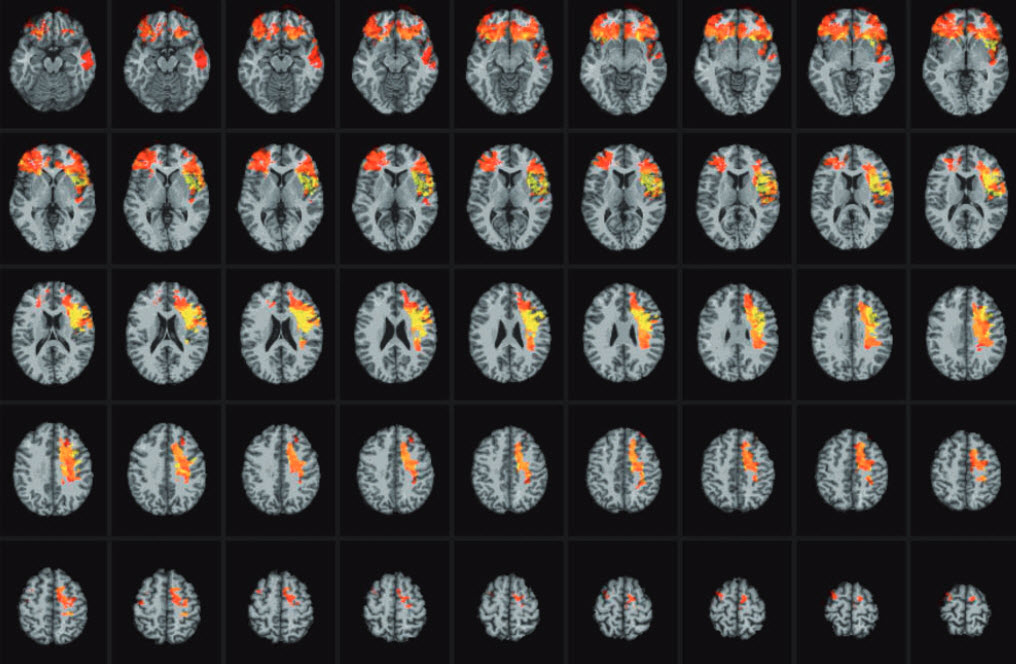The social origins of intelligence in the brain
August 1, 2014

“We are trying to understand the nature of general intelligence and to what extent our intellectual abilities are grounded in social cognitive abilities,” said Aron Barbey, PhD (credit: iStock)
By studying the injuries and aptitudes of Vietnam War veterans who suffered penetrating head wounds during the war, researchers have found that brain regions that contribute to optimal social functioning are also vital to general intelligence and emotional intelligence.
This finding, reported in the journal Brain, bolsters the view that general intelligence emerges from the emotional and social context of one’s life.
“We are trying to understand the nature of general intelligence and to what extent our intellectual abilities are grounded in social cognitive abilities,” said Aron Barbey, a University of Illinois professor of neuroscience, psychology, and speech and hearing science.
Barbey, an affiliate of the Beckman Institute and he Institute for Genomic Biology at the University of Illinois, led the new study with an international team of collaborators.

“Intelligence may originate from the central role of relationships in human life and therefore may be tied to social and emotional capacities” (credit: iStock)
Studies in social psychology indicate that human intellectual functions originate from the social context of everyday life, Barbey said. “We depend at an early stage of our development on social relationships — those who love us care for us when we would otherwise be helpless.”
Social interdependence continues into adulthood and remains important throughout the lifespan. “Our friends and family tell us when we could make bad mistakes and sometimes rescue us when we do.
“And so the idea is that the ability to establish social relationships and navigate the social world is not secondary to a more general cognitive capacity for intellectual function, but that it may be the other way around. Intelligence may originate from the central role of relationships in human life and therefore may be tied to social and emotional capacities.”
Building a collective map of the brain

Lesion–symptom mapping of everyday problem solving (credit: Aron K. Barbey et al./BRAIN)
The study involved 144 Vietnam veterans injured by shrapnel or bullets that penetrated the skull, damaging distinct brain tissues while leaving neighboring tissues intact. Using CT scans, the scientists painstakingly mapped the affected brain regions of each participant, then pooled the data to build a collective map of the brain.
The researchers used a battery of carefully designed tests to assess participants’ intellectual, emotional and social capabilities. They then looked for damage in specific brain regions tied to deficits in the participants’ ability to navigate intellectual, emotional or social realms. Social problem solving in this analysis primarily involved conflict resolution with friends, family and peers at work.

The researchers used a battery of carefully designed tests to assess Vietnam War veterans’ intellectual, emotional, and social capabilities (credit: iStock)
As in their earlier studies of general intelligence and emotional intelligence, the researchers found that regions of the frontal cortex (at the front of the brain), the parietal cortex (further back near the top of the head) and the temporal lobes (on the sides of the head behind the ears) are all implicated in social problem solving. The regions that contributed to social functioning in the parietal and temporal lobes were located only in the brain’s left hemisphere, while both left and right frontal lobes were involved.
The brain networks found to be important to social adeptness were not identical to those that contribute to general intelligence or emotional intelligence, but there was significant overlap, Barbey said.

“Intelligence may originate from the central role of relationships in human life and therefore may be tied to social and emotional capacities,” said Aron Barbey, PhD. (credit: iStock)
“The evidence suggests that there’s an integrated information-processing architecture in the brain, that social problem solving depends upon mechanisms that are engaged for general intelligence and emotional intelligence,” he said. “This is consistent with the idea that intelligence depends to a large extent on social and emotional abilities, and we should think about intelligence in an integrated fashion rather than making a clear distinction between cognition and emotion and social processing.
This makes sense because our lives are fundamentally social — we direct most of our efforts to understanding others and resolving social conflict. And our study suggests that the architecture of intelligence in the brain may be fundamentally social, too.”
The U.S. National Institute of Neurological Disorders and Stroke supported this work, along with a grant from the U.S. Army Medical Research and Material Command administered by the Henry M. Jackson Foundation.
Abstract of Brain paper
Accumulating neuroscience evidence indicates that human intelligence is supported by a distributed network of frontal and parietal regions that enable complex, goal-directed behaviour. However, the contributions of this network to social aspects of intellectual function remain to be well characterized. Here, we report a human lesion study (n = 144) that investigates the neural bases of social problem solving (measured by the Everyday Problem Solving Inventory) and examine the degree to which individual differences in performance are predicted by a broad spectrum of psychological variables, including psychometric intelligence (measured by the Wechsler Adult Intelligence Scale), emotional intelligence (measured by the Mayer, Salovey, Caruso Emotional Intelligence Test), and personality traits (measured by the Neuroticism-Extraversion-Openness Personality Inventory).
Scores for each variable were obtained, followed by voxel-based lesion–symptom mapping. Stepwise regression analyses revealed that working memory, processing speed, and emotional intelligence predict individual differences in everyday problem solving. A targeted analysis of specific everyday problem solving domains (involving friends, home management, consumerism, work, information management, and family) revealed psychological variables that selectively contribute to each. Lesion mapping results indicated that social problem solving, psychometric intelligence, and emotional intelligence are supported by a shared network of frontal, temporal, and parietal regions, including white matter association tracts that bind these areas into a coordinated system. The results support an integrative framework for understanding social intelligence and make specific recommendations for the application of the Everyday Problem Solving Inventory to the study of social problem solving in health and disease.
“This makes sense because our lives are fundamentally social. We direct most of our efforts to understanding others and resolving social conflict. And our study suggests that the architecture of intelligence in the brain may be fundamentally social, too.” — Aron Barbey, PhD